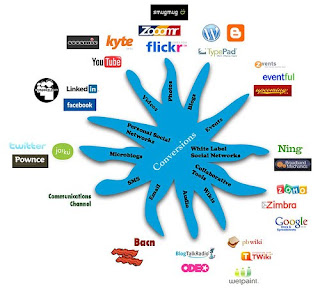
The four steps of social media success are listen, interact, react and sell. You listen to what people are saying about your product or service, interact with those saying it, react by changing your product if necessary, and then selling it. The beauty of this is, and that is why I call it four steps, is because I call it the social media escalator. I learned this from these podcast interviews. On the flip side, your customer does the exact same thing. They listen to what they think your product and service is going to deliver, so they have an expectation set, then what they are going to do is interact with your product and service, i.e. they’re going to use it and the third thing is they’re going to react. Did they enjoy their experience based on their expectation; did it do what they thought it was going to deliver? You can get good delivery with the SEO basics.
That reaction, whether it was good or whether it’s bad is then going to determine the fourth step which is they’re going to sell for or against you using these same social media tools. If you did things properly, the first four steps, then all of a sudden you see this escalator. If you think about an escalator in a mall, then it keeps going around and around and that’s the beauty of it. Then you go from word of mouth to what I call world of mouth and you have the power that enables all that. SEO training works the same way.
It’s important to adhere to those four steps, even if you’ve been in the space for a long, long time. It’s important to revisit those. There are many SEO techniques that you can use. A lot of times when I talk to people they’ll say, oh, yes listening, we’ve got that. That is so 2007. I’ll say, ok, are you giving your CEO a listening report? Are they going to report once a week with one page that says, here’s what most people say they like about the product and here’s what most people say they don’t like about the product? Are you also doing that for your competitors? A lot of times they will say, oh yes, I guess we’re not doing that as well as we should be.
On the listening side, if you don’t have a ton of budget or are just starting out, you can get by using tools like Google Alert, so you sign up for terms around your product or your brand. Those are extremely helpful. You can also go to Twitter and do a search on your product brand or the names of whatever you’re interested in, or your competitors or a name in your vertical that you think there is going to be a conversation about. So that’s the other way you can do that and pull that information in. Then there’s also the third thing you can do, you can use a tool like Technorati that’s designed to go after all the blogs.
There’s also Google Search for Blogs, so you can use that as well. So those are all free tools that are out there that over time you get a sweet spot. It’s a lot of work to listen to all that, but over time you’ll get a sweet spot, where, ok, I’m going to get the major component mainly from Google Alert and when I do a search on Twitter. If you have a bigger budget, you can go and use specific tools that are designed to listen across the web for this type of thing. A tool that is really at the forefront right now and who knows if over time it is going to remain there, but a lot of companies use something called Radian6. What that does, it not only allows you to pull in information that is being said across the web but you can also write up sentiments, was it a positive post, was it medium, was it negative? Also some of these tools have workflow capability to where you can assign a task to someone to actually respond to that person.
Those kinds of tools enable you to have these listening reports. At the end of the day, with all these tools, sometimes you have to have that final person that actually puts it together. This is fairly laborious, that executive report. It’s laborious but it’s good in that it forces someone that’s at that level before they hand it to the CEO to review and look at it, to be aware of what is being said out there.

Hi Chris,
ReplyDeleteYou hit on one of the most important functions of social media: the ability to listen. The ability to listen to consumers, advocates, whoever your potential audience is - the list goes on and on. It's all about identifying what will meet the needs of the brands you work for. If its reports, so be it - but also have a reason for showing the reports. Is the information viable? Will it matter to the people you're presenting it to? All of those should be answered before embarking on that journey.
Thanks for mentioning us as a tool to use.
Lauren Fernandez
Community Manager, Radian6